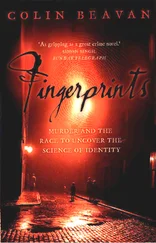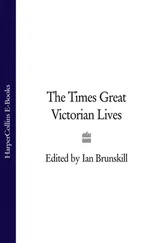Constance began to suspect that her mother, whom she had mocked, had never been insane; rather, 'she must have been a saint': 'about her mother there seemed to be some sort of mystery'. The letter-writer explained that Constance slowly came to realise that her father and her governess had been lovers since she was very young. With hindsight, she guessed at the sexual secrets that had been kept from her - her memories were ignited and disfigured by suspicion. As a small child, Constance had 'slept in a room inside that of the governess, who always locked the door between when she came to bed. Mr Kents bed & dressing room were on the other side & when he was away the governess said she was frightened to be alone & Constance had to sleep with her.' Once, in the library, Miss Pratt took fright during a thunderstorm and rushed over to Samuel. He drew her down onto his knee and kissed her. 'O! not before the child,' she exclaimed. Constance was disturbingly entangled in this sexual scene, bearing witness to their intimacies, sleeping in a locked chamber of the governess's room, or taking her father's place in the governess's bed.
Like the heroine of Henry James's What Maisie Knew (1897), Constance was a child obliged 'to see much more than she at first understood'. This was how the impulse to detect might begin, in confusion or fear, in an urge to grasp the half-guessed-at secrets of the adult world. Constance read the clues scattered through her early life, pieced together a crime (the betrayal of her mother), identified the criminals (her father and her governess). Perhaps all detectives learn their curiosity in childhood, and remain unusually absorbed by the past.
The letter from Sydney threw out an intriguing suggestion about the Kent family history: the writer remarked that Constance and William had 'Hutchinsonian' teeth; that William had an abscess on one of his legs; and that several of their siblings had died in infancy. Hutchinsonian teeth are notched incisors, identified by the physician Jonathan Hutchinson in the 1880s as a symptom of congenital syphilis. This condition also causes leg ulcers (gummata), and used to claim the lives of many babies. The writer of the Sydney letter was hinting that Samuel's first wife was syphilitic.
Syphilis is an affliction easy to suspect in retrospect, and difficult to prove - Isabella Beeton and her husband, Thomas Hardy and his wife, Beethoven, Schubert, Flaubert, Nietzsche, Baudelaire, van Gogh have all been identified as possible sufferers. The illness was widespread in the nineteenth century - there was then no cure - and was known as the 'Great Imitator' for its capacity to mimic other afflictions, taking on their colours like a chameleon. Since it was usually contracted through illicit sex, its victims hid its existence. Those with the money to buy confidential medical care often succeeded in keeping their secret.
Supposing Samuel caught syphilis in London, the symptoms might have forced his resignation from the dry-salters company and his flight to Devonshire in 1833: the disease manifests itself in painless chancres, usually on the genitals, for the first few weeks, but then produces a fever, aches, and an unsightly rash all over the body. Samuel may have needed to escape from view. If he had 'the pox', his desire for seclusion and secrecy is easier to understand, as is his apparent failure to find another job until 1836.
In the first few months, syphilis is wildly infectious - when Samuel had sex with his wife, the bacteria issuing from the chancres on his body are almost certain to have swarmed through a tiny cut or tear in hers. (These bacteria, which were identified under the microscope in 1905, are known as spirochetes, a name derived from the Greek for 'turning threads'.) The first Mrs Kent would unwittingly have passed the illness on to the babies in her womb. A foetus with congenital syphilis was likely to be miscarried or stillborn, and if it survived birth was typically puny, wizened, feeble, barely able to feed, and prone to die in infancy. Syphilis could have accounted for the several miscarriages that Mrs Kent suffered, as well as the four infants in succession that she saw die. Some children of syphilitic mothers showed no signs of the illness in their youth but grew up to develop notched teeth, bowed legs or other of the symptoms identified by Hutchinson. Perhaps Joseph Stapleton suspected syphilis when he alluded to how a man's 'intemperance' - alcoholic, financial or sexual - could damage his children.
If Samuel had syphilis, he was presumably one of the lucky majority of sufferers who after a year or two showed no obvious further symptoms. But his wife seems to have been one of the unlucky minority who after some years (typically between five and twenty) developed tertiary syphilis, a condition not understood until long after her death: this often manifested itself in personality disorders and then paresis, 'general paralysis of the insane', a steady, incurable deterioration of the brain. As well as explaining her mental illness and frailty, tertiary syphilis could account for her early death (at forty-four) from intestinal blockage - gastrointestinal problems were among the many possible symptoms, and death usually took place between fifteen and thirty years after the initial infection.
It is tempting to blame syphilis for the similarly early death of the second Mrs Kent, who became paralysed and almost blinded before dying in Wales at forty-six - her symptoms are characteristic of tabes dorsalis, also a manifestation of tertiary syphilis - but she could only have caught it from Samuel if he became re-infected. This was possible. Samuel would have thought himself cured once his chancres and rashes subsided. Mid-Victorians believed that the pox could not be caught twice - a myth that arose because re-infection was not accompanied by lesions or spots.
The evidence is circumstantial and inconclusive. Even the author of the Sydney letter was probably not sure. But if we hypothesise backwards from the Hutchinsonian teeth, the beginning of the story of the Kent family's tragedy may have been a sexual encounter between Saville's father and a London prostitute in the early 1830s. The clue may have ended in the almost invisible world by which William Saville-Kent was so enthralled, in a thread-like, silvery, twisting creature so tiny that it could be seen only through the glass of a microscope.
The connection between syphilis and diseases such as tabes dorsalis and paresis was not recognised until the late nineteenth century, so it is only with hindsight that we can suspect Samuel of causing his wives' ill-health. When he publicised the insanity of the first Mrs Kent, or the paralysis and blindness of the second, Samuel Kent had no idea that he might be leaving clues to the corruptions of his own body.
Strangely, the letter from Sydney in no way cleared up the implausible elements in Constance's confession of 1865, even though the book by John Rhode that provoked the letter had described that confession as 'frankly incredible' and so 'utterly unsatisfactory' that there were grounds for doubting the girl's guilt. 'Her psychology appears so amazing that almost any speculation based upon it is justified,' wrote Rhode. 'It is indeed possible that, in the intensively religious atmosphere of St Mary's Hospital, she conceived the idea of offering herself as a sacrifice, in order to clear away the cloud that rested upon her family.' The person best placed to solve a crime ought to be its perpetrator. As The Times observed on 28 August 1865: 'The previous failure of all investigation had shown that the mysteries of the murder could never be unravelled but by the person who had committed it.' Constance had proved an imperfect detective, in her confessions and in the anonymous letter in which she seemed to bare her soul: her solution was flawed. Did this mean she was not the murderer?
Читать дальше












